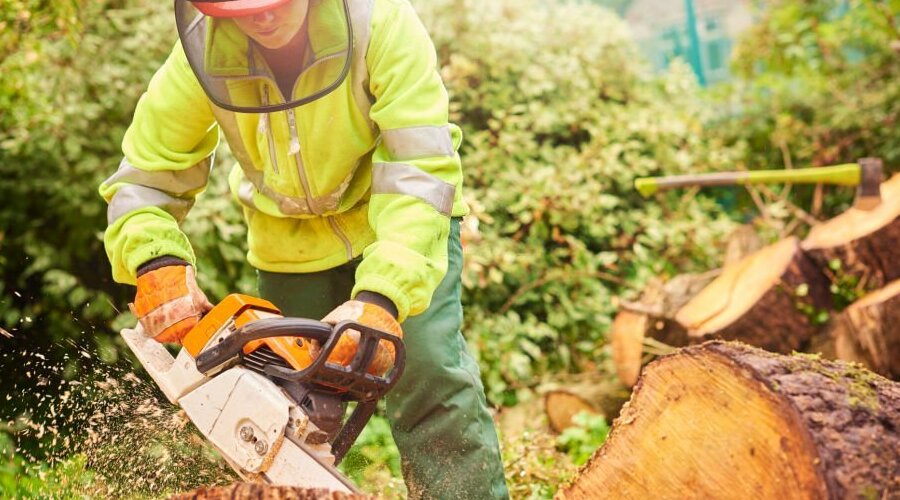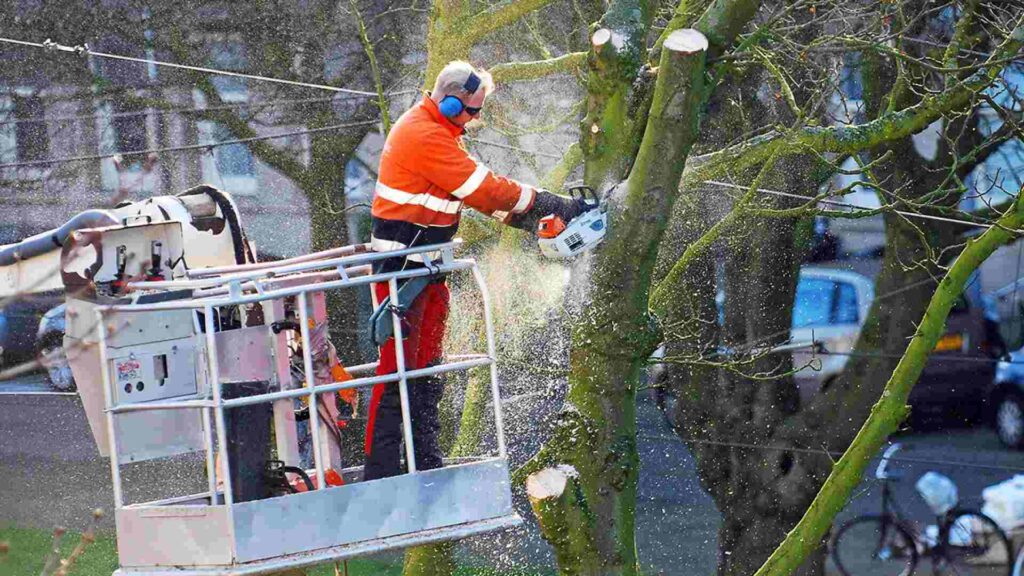Tree removal is a common activity that often requires permission from local councils due to the potential impact on the environment, public safety, and the character of the neighborhood. Understanding the regulations and procedures surrounding council tree removal is crucial for homeowners and property owners to ensure compliance and avoid penalties. This article aims to provide a comprehensive guide to navigate the complex landscape of tree removal regulations, including the importance of these regulations, the legal framework, the tree removal process, engaging with local councils, and answering frequently asked questions.
Understanding the Importance of Tree Removal Regulations
Tree removal regulations play a crucial role in safeguarding the environment and maintaining the beauty of the community. Trees provide numerous benefits, including providing shade, improving air quality, and enhancing the aesthetic appeal of an area. These regulations are designed to ensure that tree removal is undertaken responsibly and with careful consideration of the potential consequences. By regulating tree removal, councils can protect significant trees, preserve the natural habitat of wildlife, and maintain the overall health and integrity of the environment.
The Role of Local Councils in Tree Preservation
Local councils are responsible for creating and enforcing tree preservation regulations within their jurisdictions. They play a vital role in overseeing council tree removal applications, issuing permits, and monitoring compliance with the rules. Councils also contribute to the development of urban forestry management plans, which guide the sustainable management of trees in the community. Engaging with the local council during the tree removal process is essential to ensure a smooth and compliant procedure.
Why Are Tree Removal Regulations Necessary?
Tree removal regulations are necessary for several reasons. First and foremost, they help preserve the natural environment by protecting significant and ecologically valuable trees. These regulations also ensure that trees are not removed arbitrarily or haphazardly, preventing the unnecessary loss of mature trees that provide numerous environmental benefits. Additionally, tree removal regulations help prevent disputes between neighbors and maintain the aesthetic appeal of the community. By having clear guidelines and procedures in place, conflicts can be minimized, and trees can be removed in a responsible and regulated manner.
Moreover, tree removal regulations also take into account the historical significance of certain trees. Some trees may have cultural or historical importance, and their removal could result in the loss of valuable heritage. By preserving these trees, communities can maintain a connection to their past and honor the legacy of those who came before.
Furthermore, tree removal regulations also consider the impact on wildlife. Trees provide habitat for a variety of species, including birds, squirrels, and insects. Removing trees without proper consideration can disrupt these ecosystems and lead to a decline in biodiversity. By regulating tree removal, councils can ensure that wildlife habitats are protected and that the delicate balance of nature is maintained. Learn more about professional tree pruning tools.
The Legal Framework Surrounding Tree Removal
Tree removal regulations operate within a legal framework that includes both national laws and local ordinances. Understanding this legal framework is essential for navigating the tree removal process successfully.
When it comes to national laws, countries often have legislation in place to protect their natural resources, including trees. These laws may aim to preserve biodiversity, prevent deforestation, or regulate land use to maintain ecological balance. Understanding how these national laws intersect with local ordinances can provide a comprehensive view of the legal landscape surrounding tree removal.
National Laws and Local Ordinances
Tree removal regulations vary from one jurisdiction to another, with some regulations dictated by national laws and others imposed by local councils. It is important to familiarize yourself with the specific regulations that apply to your area. National laws typically outline overarching principles and objectives, while local ordinances provide specific guidelines and procedures for tree removal within a particular council’s jurisdiction.
Local ordinances, on the other hand, may address more localized concerns such as tree preservation in urban areas, protection of heritage trees, or regulations specific to certain tree species. These ordinances are often tailored to address the unique environmental and aesthetic considerations of a particular region.

Penalties for Non-Compliance
Non-compliance with tree removal regulations can lead to significant penalties. These penalties may include fines, legal action, or requirements to undertake remedial actions. To avoid potential penalties, it is imperative to understand and adhere to the tree removal regulations applicable to your property.
Furthermore, in cases where tree removal is deemed necessary, some jurisdictions may require property owners to obtain permits or seek approval from relevant authorities before proceeding. This process is designed to ensure that tree removal is carried out responsibly and with proper consideration for environmental impact and community well-being.
The Tree Removal Process
The tree removal process involves several steps, from identifying trees subject to council regulations to obtaining a tree removal permit. Understanding these steps is crucial for a smooth and compliant tree removal procedure.
Before embarking on the tree removal journey, it’s important to consider the environmental impact of removing a tree. Trees play a vital role in providing oxygen, improving air quality, and offering habitat for wildlife. Therefore, exploring alternative options such as tree trimming or transplanting should be considered to preserve the ecological balance of the area.
Identifying Trees Subject to Council Regulations
An essential first step in the tree removal process is identifying trees that fall under council regulations. Trees may be protected due to their species, size, or location. It is essential to consult with local council guidelines to determine if a tree is subject to removal restrictions. In some cases, professional arborists may be required to assess and provide recommendations regarding tree removal.
Furthermore, understanding the cultural significance of trees in the area is crucial. Some trees may hold historical value or have sentimental importance to the community, making their removal a sensitive matter. Engaging with local historical societies or environmental groups can provide valuable insights into the significance of specific trees.
Steps to Apply for a Tree Removal Permit
Once it is established that a tree is subject to council regulations, property owners must apply for a tree removal permit. The exact process may vary between councils, but generally, it involves submitting an application containing relevant information such as the reason for removal, tree species, and supporting documentation. It is crucial to provide accurate and detailed information to expedite the permit approval process.
Additionally, creating a comprehensive tree removal plan is essential. This plan should outline the method of tree removal, disposal of green waste, and any replanting initiatives to offset the tree loss. Demonstrating a commitment to sustainable practices and environmental stewardship can strengthen the case for permit approval and showcase responsible land management.

Engaging with Your Local Council
Engaging with your local council is essential throughout the tree removal process. Proper communication and cooperation can help clarify regulations, expedite permit approval, and ensure a successful outcome.
When dealing with your local council, it is important to understand that each municipality may have its own set of rules and regulations regarding tree removal. These regulations are put in place to protect the environment, preserve green spaces, and maintain the overall aesthetics of the area. By engaging with your council, you not only ensure compliance with these regulations but also contribute to the sustainable management of trees within your community.
When and How to Contact Your Council
It is advisable to contact your local council early in the planning stages of tree removal. They can provide guidance on specific regulations, permit requirements, and any additional considerations. Council contact details are usually available on their official website or by calling their main office. Timely communication with the council can help prevent unnecessary delays and ensure compliance with the regulations.
Furthermore, establishing a positive relationship with your local council can lead to a more streamlined tree removal process. By demonstrating a willingness to work within the established guidelines and seeking advice when needed, you show your commitment to responsible tree management.
Tips for a Successful Council Engagement
To ensure a successful council engagement, consider the following tips:
- Research and familiarize yourself with the local council’s tree removal regulations.
- Prepare all necessary documentation and provide accurate information when applying for a tree removal permit.
- Stay informed about deadlines and requirements to prevent delays in the permit approval process.
- Seek professional advice from arborists or tree specialists to ensure compliance with the regulations and optimize the safety of the tree removal process.
- Maintain respectful and open communication with council representatives, addressing any concerns or queries promptly.
Frequently Asked Questions about Council Tree Removal
Can I Remove a Tree Without a Permit?
The requirement for a tree removal permit varies depending on the council and the specific circumstances. In some cases, small trees or certain tree species may not require a permit. However, it is crucial to consult your local council guidelines to determine if a permit is necessary. It is always advisable to contact the council before removing any tree to avoid potential penalties.
When considering tree removal, it’s important to assess not only the need for a permit but also the potential impact on the surrounding environment. Trees play a vital role in providing oxygen, shade, and habitat for wildlife. Removing a tree without proper consideration can disrupt the ecosystem and affect the aesthetics of the area. Before making a decision, it’s beneficial to consult with arborists or environmental experts to understand the implications of tree removal.
What Happens if I Disagree with the Council’s Decision?
If you disagree with the council’s decision regarding tree removal, you may have options for appeal or reconsideration. The specific process for appeals may vary between councils. Typically, it involves submitting a formal appeal containing relevant information and evidence to support your case. Consult your local council’s guidelines or seek legal advice to understand the options available to you.
Engaging in discussions with the council and presenting a well-reasoned argument supported by facts can strengthen your case for tree removal. Providing documentation such as tree assessments, risk evaluations, and alternative solutions can demonstrate your commitment to responsible tree management. Collaboration with the council can lead to a mutually beneficial outcome that considers both the property owner’s needs and the preservation of the environment.
In conclusion, navigating the regulations and procedures surrounding council tree removal is essential for homeowners and property owners. Understanding the importance of these regulations, the legal framework, the tree removal process, and engaging with local councils can help ensure a smooth and compliant tree removal procedure. By following the guidelines and obtaining necessary permits, property owners can contribute to the preservation of the environment and the overall beauty of their communities.
